Nothing is more inviting than the smell of a fresh, clean house. Instead of using air fresheners that are synthetic and in most cases just cover up the smell with a mix of chemicals, there is a healthier and more satisfying option available: cultivating Fragrant Plants.
In this article, ten small and fragrant plants will be introduced which according to horticulture and the advice of experienced gardeners can eliminate the bad odors.
Also, the natural scents and volatile compounds will be discussed as ways for indoor air purification and making your home a place of fresh, natural fragrance.
The Science Behind Scent: The Role of Plants in Air Freshening
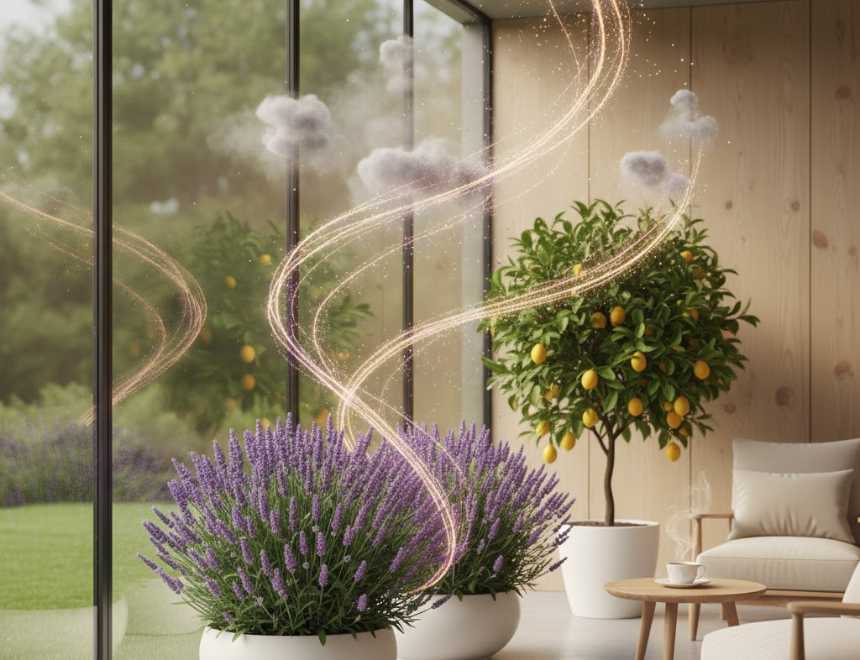
The plants will be introduced shortly, but first it is worth knowing how they perform their olfactory magic. Plants emit Volatile Organic Compounds (VOCs), which are the highly aromatic and lightweight molecules that vaporize quickly and mix with the air
. These are the compounds that produce the signature smells of lavender, pine, and roses.
The research on the essential oils that are derived from these VOCs—highly concentrated versions of plant VOCs—has yielded some very promising results in terms of anti-fungal and anti-microbial properties.
For example, a review conducted in 2018 and published in Rev Environ Health reported that essential oils from clove, tea tree, oregano, thyme, and lemon have potential as antifungal agents, thus possibly helping to reduce the occurrence of mold that often leads to musty smells.
Another evidence-based review cited fumigation with herbs like Styrax benzoin (benzoin) and Commiphora myrrha (myrrh) as a method validated for its effect on airborne microbes.
Moreover, the advantages are not limited to the functional aspect only. A landmark study in 2009 that was released in the Journal of Agricultural and Food Chemistry suggested that the inhalation of linalool—
a molecule found in lavender and other plants in large amounts—can bring back the immune cell levels that are elevated by stress to almost normal and down-regulate the activity of more than a hundred genes that are made overactive in stressful conditions.
Thus, by having these plants in your house, you are not only fighting bad smells but also possibly making a more soothing atmosphere.
Also Read: 20 Plants That Keep Bugs Out of Your Home
10 Small Fragrant Plants for a Fresher Home
The compressing scents like lavenders, which have been proven to be effective for stress reduction, are some of the plants chosen to be the source of the pleasant-smelling, natural, and fragrant indoor environments.
1. Lavender (Lavandula)
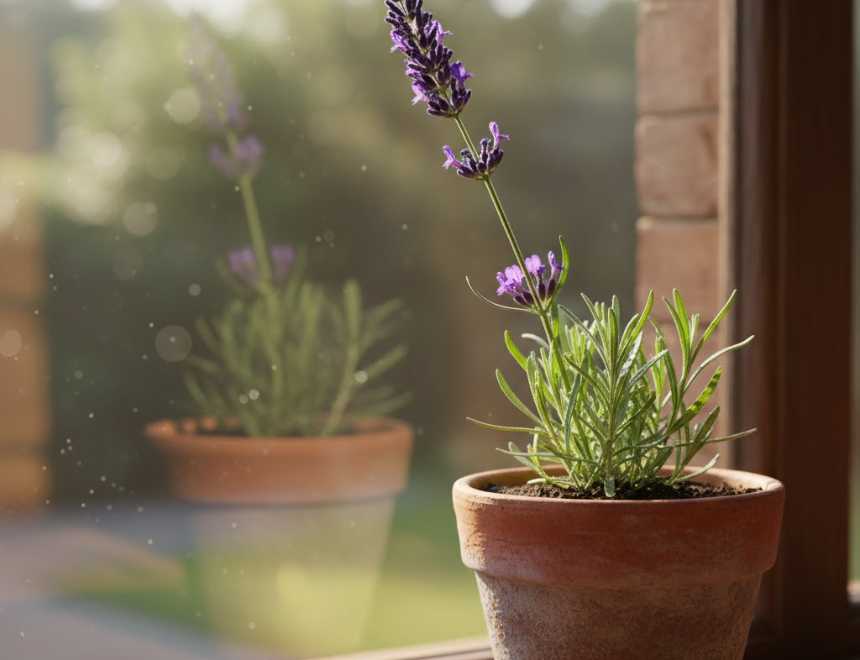
Linalool, the most potent terpene alcohol when it comes to its stress-reducing properties, is what lavender is all about. Apart from being widely known for covering other smells and making the place quite lovely, the floral scent of lavender is very soothing.
Its fragrance is especially strong when the plant is touched or when it gets heated by the sun.
Care Tips:
- Light: It needs a lot of sun directly—preferably a south-facing window.
- Water: Give it a good soaking occasionally but let the top of the soil get dry in between. Be careful as it is very prone to root rot.
- Size: Trying to grow dwarf types such as ‘Lady’ or ‘Munstead’ in indoor pots will work well.
2. Rosemary (Rosmarinus officinalis)

Rosemary gives off a aroma of fresh and herbs which can be both exciting and uplifting at the same time. Its volatile oils are filled with 1,8-cineole-like molecules that have been claimed to help with breathing and even unblocking noses.
Hence, it is a perfect choice if you want a fresher atmosphere in your study or home office.
Care Tips:
- Light: Requires minimum of 6 hours of bright sun every day.
- Water: Water only when the upper layer of soil feels dry. Proper drainage is crucial.
- Bonus: You can regularly take some fresh cuttings for your cooking.
Also Read: How to Grow Cuban Oregano Plant From Cuttings
3. Lemon Balm (Melissa officinalis)
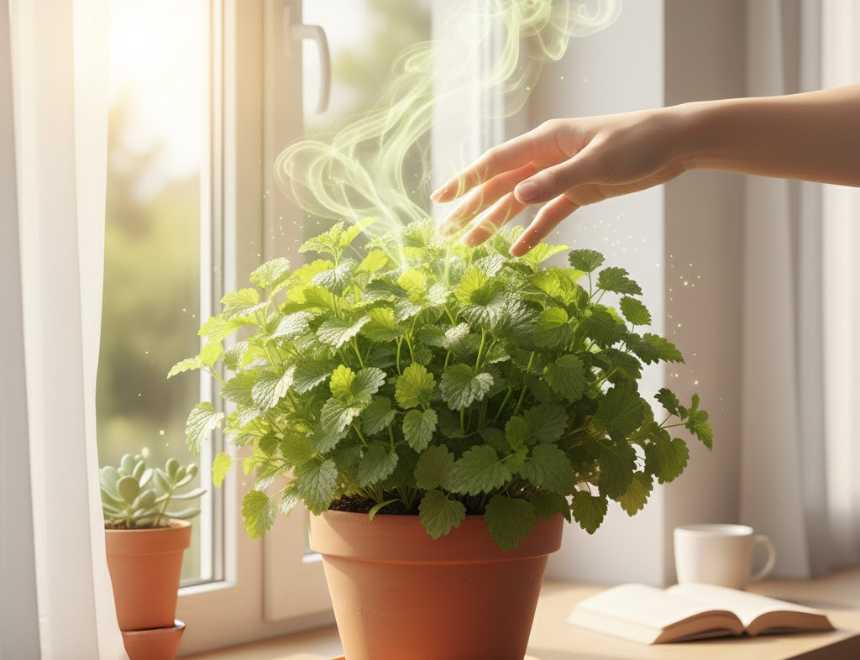
Lemon Balm, being a member of the mint family, gives off a very refreshing and citrusy scent when its leaves are handled. This scent that is uplifting and pleasant is great for getting rid of cooking smells and also simply making a room smell neat and bright.
Care Tips:
- Light: Grows best in full sun to partial shade.
- Water: Moisten the soil all the time.
- Note: It can grow quite fast; if you prune it once in a while, it will remain bushy and under control.
4. Scented Geranium (Pelargonium)
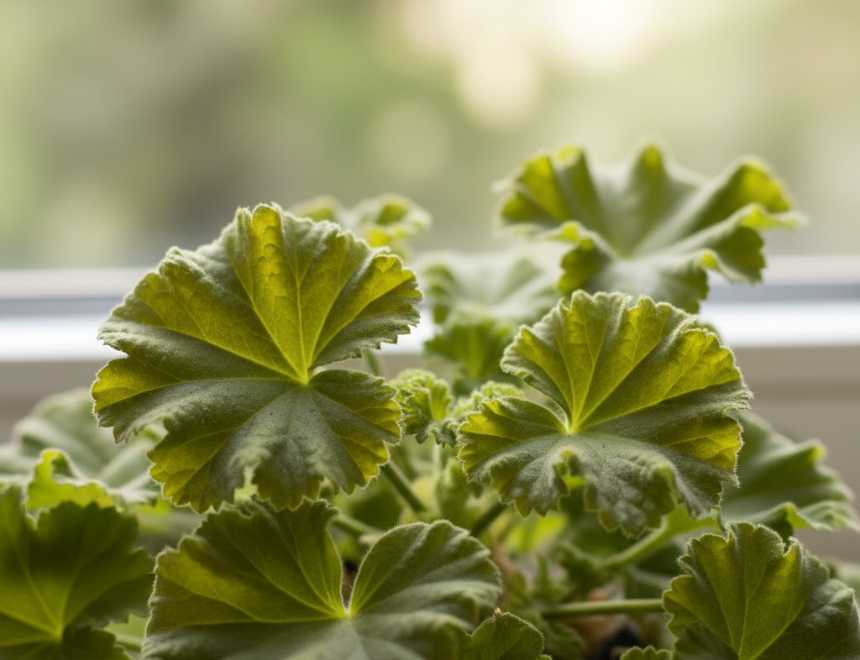
The scent of scented geraniums can range from rose to lemon and from mint to nutmeg, making them a very versatile plant class.
A 2021 longitudinal study published in Frontiers in Psychology indicated that the smell of pelargonium, especially, was the reason for awareness of senses and it helped to reduce the stress of the participants getting the nature-based rehabilitation.
Care Tips:
- Light: Likes bright, non-direct light.
- Water: Water when the soil is dry on the surface.
- Pro Tip: Just rub the leaves a bit to enjoy their beautiful scent.
Also Read: 15 Examples Of Plants That Grow From Stems
5. Gardenia (Gardenia jasminoides)
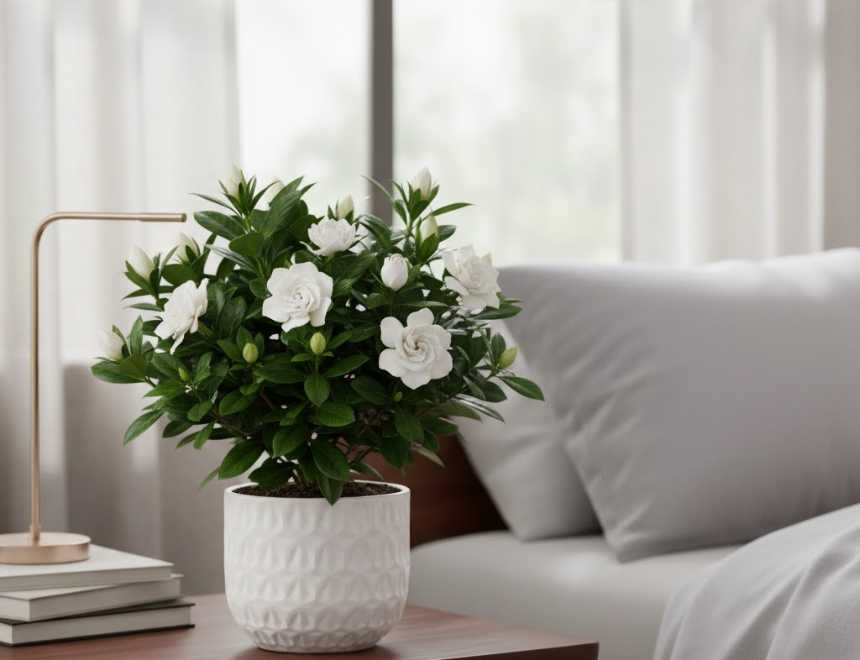
Offering an extremely sweet and floral aroma, Gardenia is unmatched by few plants. Its overpowering fragrance can radiate around and thus, eliminate the less pleasant odors.
It is a standard choice for bedrooms and guest areas where the presence of a sumptuous smell is wanted, a fragrant lants.
Care Tips:
- Light: Prefers bright, indirect light. Protect from harsh, direct sun which can cause leaf burn.
- Water and Humidity: Always keep soil damp while providing high humidity. This can be the most difficult part of indoor plant care.
- Size: Dwarf varieties like ‘Radicans’ are better suited for indoor growing.
Also Read: Everlasting Floral Beauty: Timeless Room Decor Ideas for 2025
6. Sweet Bay Laurel (Laurus nobilis)
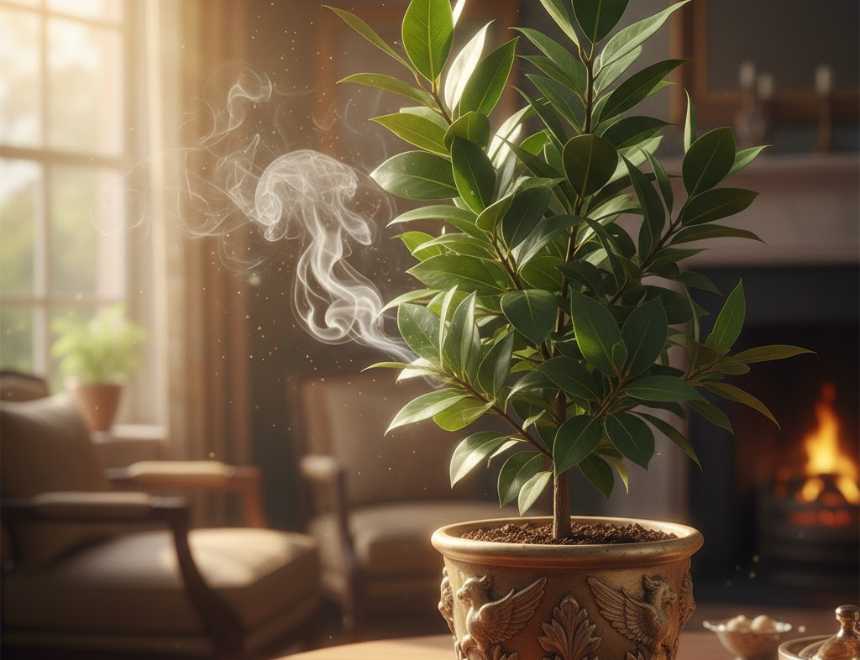
Sweet Bay tree leaves are aromatic with a hint of spice and possess the characteristic scent of evergreen. You might recognize it as an herb for making dishes, however, just planting it as a houseplant will gradually scent the area around it.
Now and then, crush a leaf to get a stronger smell.
Care Tips:
- Light: Loves full sun up to half shade.
- Water: Keep the soil dry and then water. It can tolerate dryness quite well.
- Form: You can prune it into any shape, like topiary or small tree.
Also Read: Science and Splendor of an Indoor Salad Garden
7. Mint (Mentha)
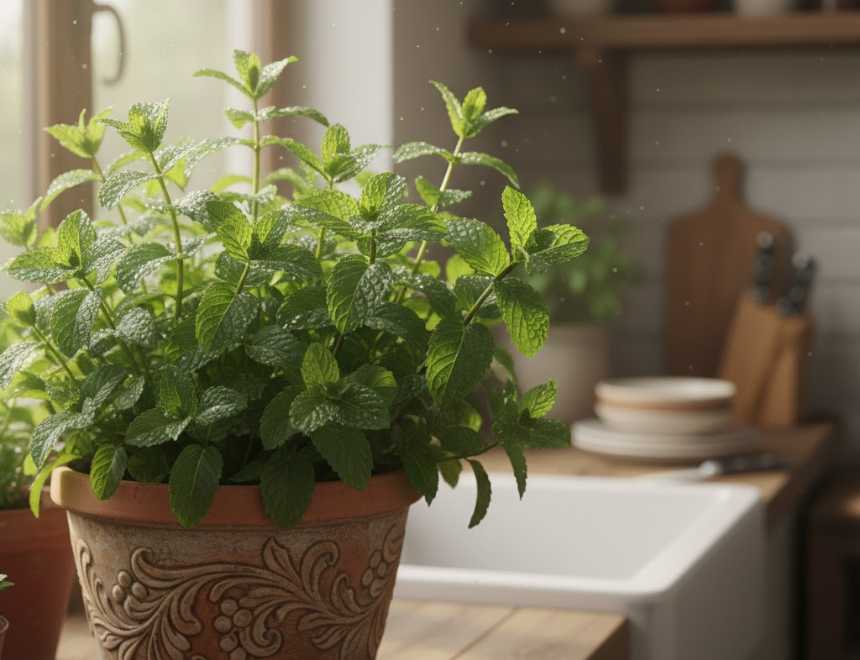
The strong and fresh scent of mint is a perfect air freshener that fights off any remaining old or suffocating air. Especially effective are peppermint and spearmint.
The primary element of peppermint oil, menthol, has been recognized as a decongestant and a powerful antiseptic.
Care Tips:
- Light: Does well in sun that is partly to fully shining.
- Water: Likes soil that is consistently moist.
- Container Warning: Mint should be grown in a pot at all times as it is very invasive and will occupy any soil shared with it.
8. Thyme (Thymus vulgaris)
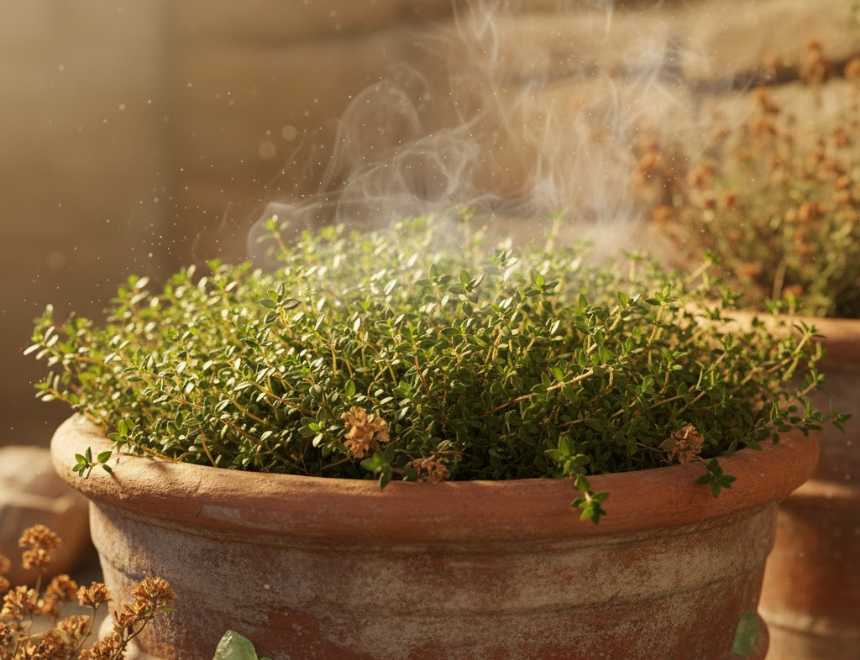
The smell of thyme is warm, earthy, and somewhat medicinal. Its essential oil has been researched and found to have considerable antifungal activity, which could be a factor in improving air quality by eliminating mold spores.
Creeping thyme is an attractive and scented ground cover in a large planter.
Care Tips:
- Light: Needs full sun.
- Water: Water only when the soil is dry and do so thoroughly. It is very tolerant of water stress but very sensitive to over-watering.
- Use: Like rosemary, it is a great culinary herb for the windowsill.
Also Read: 26 Plants That Can Live In A Basement
9. Eucalyptus (Eucalyptus spp.)
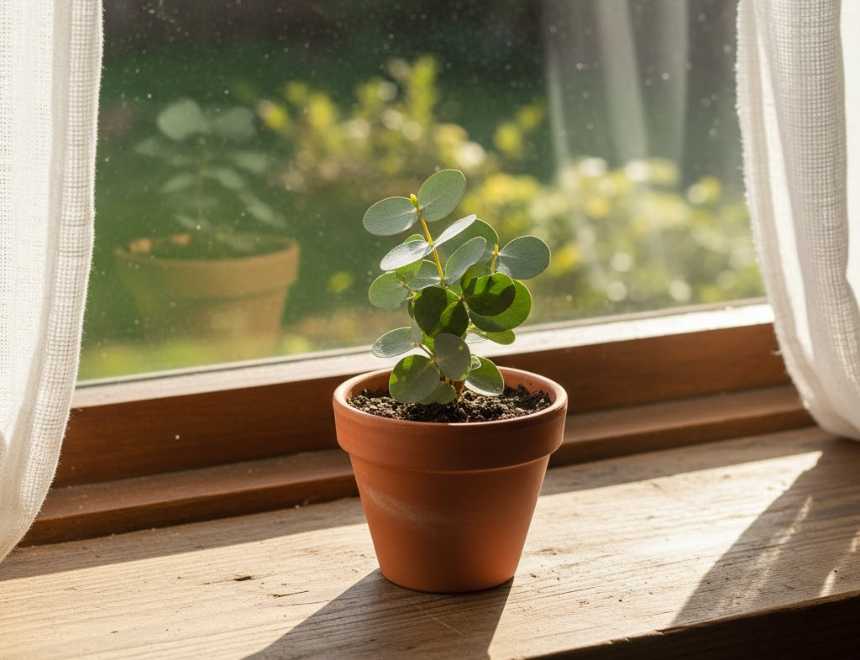
For the mind to be uncluttered and the room to be refreshed nothing except the fresh, clean scent of Eucalyptus can do so. Eucalyptol, which is the main ingredient of Eucalyptus oil, is a powerful antiseptic and antimicrobial agent and is also thought to be a purifying agent for the air.
Care Tips:
- Light: Must have direct sunlight for a number of hours each day.
- Water: The soil should be allowed to drain a little before watering.
- Dwarf Varieties: Eucalyptus gunnii (or E. cinerea) are recommended as the best choices for growing in pots.
Also Read: What Are The Latest Innovations In Gardening?
10. Lemon Verbena (Aloysia citrodora)
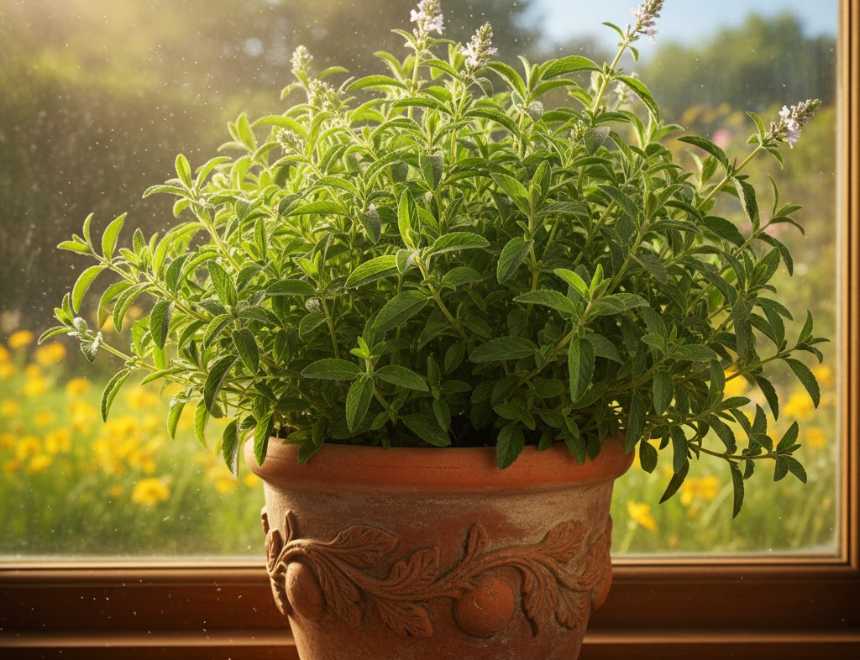
If the smell of fresh lemons is something you really like, then Lemon Verbena is the plant for you. It has a stronger and truer aroma of lemon than any other lemon-scented plant.
A room occupied by it can be mistaken for a newly-cleaned one due to its mere presence.
Care Tips:
- Light: Requires total sun exposure.
- Water: Keep the soil evenly moist but avoid water logging.
- Note: It is a deciduous plant that might undergo dormancy in winter by shedding its leaves; however, it will still come back in spring.
Also Read: 8 Trendy Wallpaper Designs for Living Room in 2025: Expert Picks
A Holistic Approach to a Fresh-Smelling Home
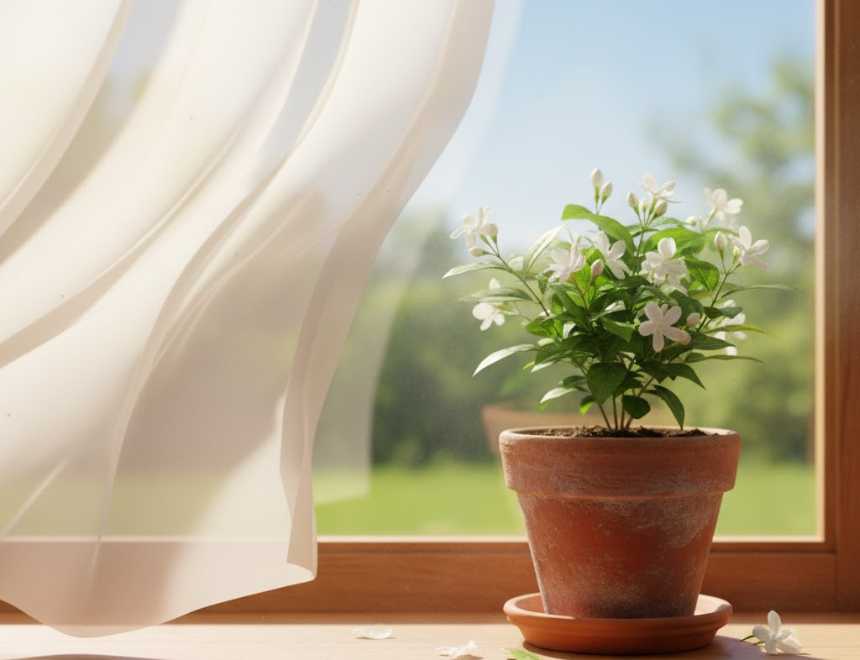
The bad odor issue is going to be dealt with thoroughly, even though these fragrant plants play an indispensable role in the room in terms of smell. A multi-faceted approach is the most effective way to tackle this issue:
Source Removal: Indoor air quality guides admit that covering a scent does not actually resolve the issue.
Scenario the same with the plants: Reveal fragrant plants to be your living, vibrant air fresheners from nature. Together with good cleaning habits, they ensure a healthy and less odorous home.
Tiny, Sweet-scented Plants
In opting for tiny, sweet-scented plants, you are choosing a non-chemical, pleasant, and mostly invisible way to make your indoor habitat better.
The rooms will not only be fragrant but also you may feel more relaxed in them and more like being close to the outdoors. Trace the odor source and get rid of it, no matter if it’s mold, mildew, old food spills, or dirty laundry that’s not quite hidden.
Ventilation: Air that doesn’t move retains dust, mold spores, and other impurities. Keeping windows open regularly is one of the easiest and most effective ways to rejuvenate your indoor air.
Cleaning on the Regular: Get rid of dust and vacuum constantly. Dust consists of a combination of dead skin, pollen, pet dander, and even insect droppings which can lead to the odor of a closed room.
Recent Posts
Rise of Spa-Like Wellness Retreats in Modern Bathroom Design
Modern residences have changed into multi-functional areas that not only provide a living environment but also a spa-like wellness. The most visible change in this trend is bathroom design, where the...
Maximize Your Mini Bathroom: Clever Remodeling Tips & Stylish Designs
In the domain of home design, the mini bathroom has always been regarded as a problem—a space that is small and functional only with minimum potential. This notion, however, is ignoring a...
